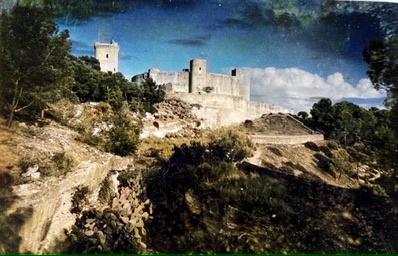What architectural elements make Mallorca’s round towers uniquely recognizable compared to similar towers elsewhere?
Similar Topics
mallorca round towers
torres de defensa
coastal watchtowers
local sandstone towers
thick walls cannon-proof
cliffside panoramic views
slit window embrasures
medieval military architecture
Mallorca’s round towers, known locally as "torres de defensa" or watchtowers, are architectural features that stand out distinctively due to their historical context and design elements. Unlike many similar coastal watchtowers found in the Mediterranean, these towers are typically robust, circular structures built primarily of local sandstone. Their walls are notably thick, designed to withstand cannon fire and harsh weather conditions, which gives them a solid, imposing appearance. The towers are often situated on cliffs or elevated coastal points, providing panoramic views of the sea, a strategic choice that reflects their original purpose of early warning and defense against pirate raids.
What makes these towers particularly recognizable is their combination of simplicity and functionality paired with subtle regional stylistic touches. Many towers feature narrow slit windows that function as embrasures, allowing defenders to observe or fire upon approaching enemies while remaining shielded. The tops of the towers often have battlements or crenellations, which were practical for defense but also enhance their silhouette against the seascape. Unlike some towers elsewhere that may incorporate more ornate elements or varied shapes, Mallorca’s towers maintain a uniform circular form that emphasizes their utilitarian origins, lending a timeless and austere beauty to the island’s coastline.
Additionally, the integration of these towers into the surrounding landscape contributes to their unique character. Often weathered by centuries of salt air and sun, the stone walls develop a distinct patina that blends harmoniously with the natural environment. Many of the towers have been preserved or restored in a way that highlights their historical significance without over-modernizing, allowing visitors to appreciate their authentic medieval military architecture. This combination of functional design, strategic siting, and subtle regional details creates a group of round towers that are not just defensive structures, but iconic symbols of Mallorca’s maritime heritage.
What makes these towers particularly recognizable is their combination of simplicity and functionality paired with subtle regional stylistic touches. Many towers feature narrow slit windows that function as embrasures, allowing defenders to observe or fire upon approaching enemies while remaining shielded. The tops of the towers often have battlements or crenellations, which were practical for defense but also enhance their silhouette against the seascape. Unlike some towers elsewhere that may incorporate more ornate elements or varied shapes, Mallorca’s towers maintain a uniform circular form that emphasizes their utilitarian origins, lending a timeless and austere beauty to the island’s coastline.
Additionally, the integration of these towers into the surrounding landscape contributes to their unique character. Often weathered by centuries of salt air and sun, the stone walls develop a distinct patina that blends harmoniously with the natural environment. Many of the towers have been preserved or restored in a way that highlights their historical significance without over-modernizing, allowing visitors to appreciate their authentic medieval military architecture. This combination of functional design, strategic siting, and subtle regional details creates a group of round towers that are not just defensive structures, but iconic symbols of Mallorca’s maritime heritage.
🧩 Related Questions
Related Question
What unique customs or rituals can travelers witness during Sóller’s annual festivals?
Related Question
How do Mallorca’s maritime climate and terroir influence the flavor profiles of its wines?
Related Question
Are there any YouTube channels dedicated to teaching Spanish phrases relevant for tourists in Mallorca?

